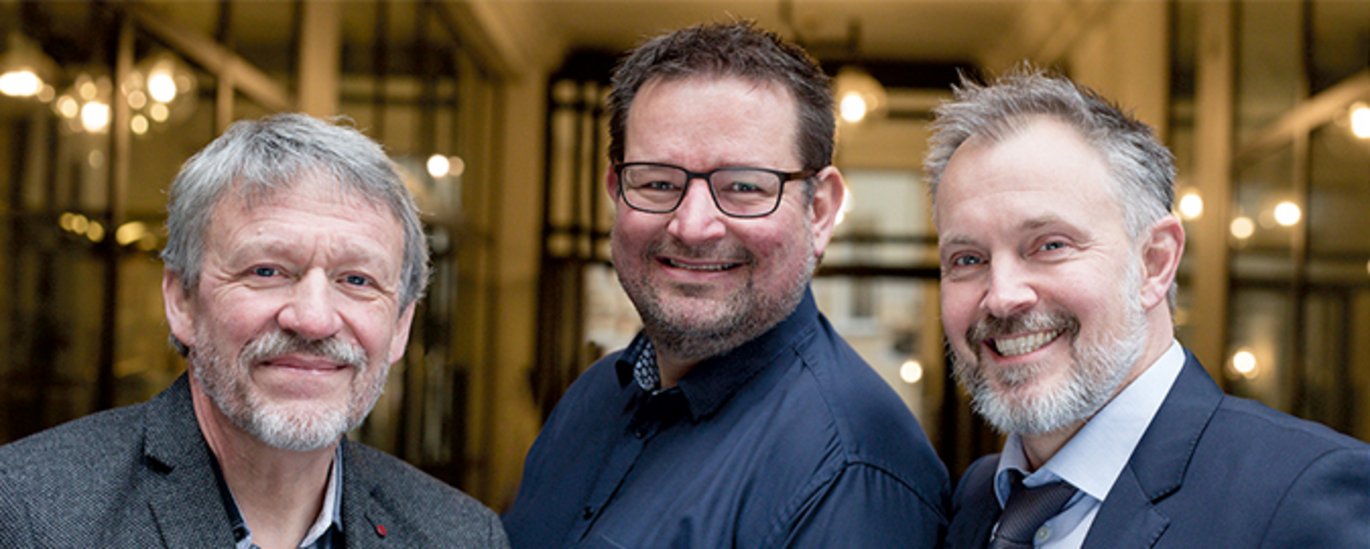The Innovation Fund Denmark's Grand Solution Prize is awarded to three researchers for their breeding of climate-friendly cows
Peter Løvendahl from the Department of Molecular Biology and Genetics at Aarhus University, Jan Lassen from Viking Genetics and Henrik Bjørn Nielsen from the Technical University of Denmark receive the Innovation Fund Denmark's Grand Solution Prize for the breeding of climate-friendly cows, which alone in Denmark ensures a reduced emission equivalent to 90,000 tonnes of CO<sub>2 </sub> a year. The prize was awarded by Søren Pind, Minister for Higher Education and Science.

Every time a cow is burping, it emits methane and thus contributes to an increase of global warming. In fact, the emissions of methane from cows represent 6% of the total greenhouse effect from Denmark. Therefore, a group of researchers decided to find out how to reduce the amount of methane in cows.
After four years of study supported by the Innovation Fund Denmark, the researchers managed to reduce methane emissions by 5%, equivalent to 90,000 tonnes of CO2 annually, while at the same time they managed to reduce feed consumption by 1%. Since Denmark is the leader in export of climate-friendly bull semen, the results have great prospects.
Researchers from the Department of Molecular Biology and Genetics (Senior Scientist Peter Løvendahl), the Cattle Breeding Association Viking Genetics (Project Manager Jan Lassen) and DTU (Chief Scientific Officer Henrik Bjørn Nielsen) have achieved these results by mapping several thousand cow genes and analyzing milk yield and feed consumption and then selected those cows with the most optimal inheritance.
- A reduction of 5% does not seem of much, but it should be remembered that it is achieved through genetic selection, and thus it will be increased in future generations as hereditary changes accumulate. Over time, it will show really big changes, and it should be added that feed consumption is reduced at the same time. This means that climate-friendly cows are also an advantage for cattle farming, says Peter Løvendahl.
- Listen to BBC's interview with Peter Løvendahl on 30 January 2018 (starts 48,40 minutes after the start of the programme)
- Read also: Towards low-impact high-yielding cows
For further information, please contact
Senior Researcher Peter Løvendahl
Department of Molecular Biology and Genetics
Aarhus University, Denmark
peter.lovendahl@mbg.au.dk – +45 87157495
